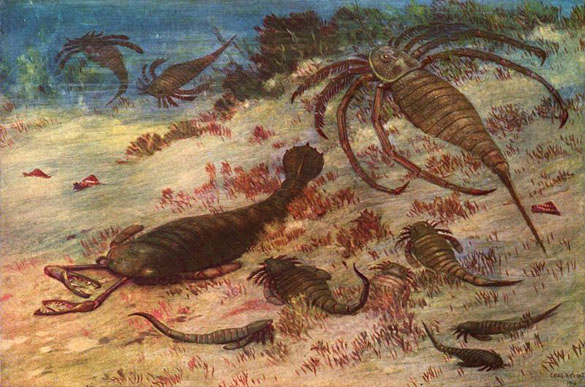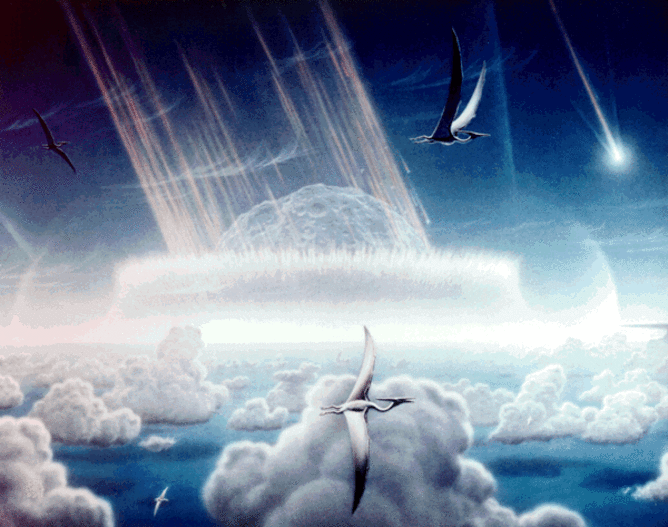Earth’s orbit along the Galactic Disc, is a long yet predictable journey that lasts for eons, but not without consequence, as Michael Rampino, a professor of biology at New York University recently observed. Rampino’s newest research, published in the Monthly Notices of the Royal Astronomical Society, believes that these infrequent rotations have coincided with the state of life on Earth.
While we often think of the comet that brought a rather dramatic end to the dinosaurs 65 million years ago when we hear of extinction, it was hardly the first time that many species died out together. Nor was it even remotely the worst. That distinction belongs to the Permian-Triassic extinction event, which occurred 252 million years ago, coinciding with the Galactic Disc rotation, in which 83 percent of all life became extinct – owing to not only volcanic events but ocean acidification and the impact of several meteors. It took approximately 10 million years for much of the life left on Earth to replenish itself. While it took more than one event to make things hostile for life on Earth, Rampino has attributed the increased number of meteoric impacts to a buildup of dark matter, which may upset the orbits of comets and also increase heating at the Earth’s core – igniting volcanic activity, a trend currently being seen in Iceland.
Even the era that paleontologists purport to be the golden age of Dinosaurs – the Jurassic period – in which some of the largest species of sauropods thrived, was preceded by another violent extinction event – the Triassic-Jurassic extinction – taking place 201.3 million years ago. It took about 10,000 years, partially because of increased activity at a massive underwater volcano known as the Central Atlantic Magmatic Province, as well as several meteoric events which took place in Europe. Today, these periods are known by the rock layers they left behind, yet it is clear that each are caused by the same violent reactions in nature and the resulting change in climate.
The Galactic Disc is a region of the Milky Way Galaxy that defines its shape and contains our solar system, amidst a heavy clutter of stars and clouds of cosmic dust and reactive gasses. Yet, surrounding the cluster, is the elusive dark matter, particles which are primarily known because of the remarkable gravity they release, impervious to light and other forms of electromagnetic radiation.
According to prior studies, the Earth makes a rotation around the Galactic Disc once every 250 million years. However, the path is not always circular but wavy, as the Sun and other planets weave their way in and out of the crowded disc at intervals of approximately 30 million years or so. The Cretaceous-Paleocene event also coincides with these patterns.
So why does dark matter in particular seem like the culprit in these occurrences? When comets move through the disc, concentrations of dark matter can sometimes intensify to the point that they begin to throw comets off course, sometimes this instability causes them to collide with the planet, acts that have defined the shape of Earth throughout its history, and also perhaps supplying it with the very amino acids necessary to sustain life. But dark matter has another somewhat more pernicious impact on our planet in a different way, too.
As the Earth is exposed to dark matter on its rotations, Rampino learned that dark matter could essentially build up within the planetary core, producing an intense heat as its particles collide with each other inside. Eventually the heat builds up considerable pressure, leading to mountain building, volcanic eruptions, and even reversals in the planet’s magnetic field. The history of rises and falls in sea levels also shows a peak happening every 30 million years.
The new model of dark matter and its interactions with planets as they move across the Galaxy could significantly impact how we perceive geological and biological development. Already, our current understanding of the Earth’s natural history is one of violent and destructive events. Dark matter could be a critical cause behind it all. Already, in what geologists have petitioned to refer to as the Anthropocene Era (the Age of Humans – due to our species’ shaping of the planet for better or for worse), many other researchers believe we are in the midst of a sixth extinction event – with climbing levels of CO2 adding to the acidification of the ocean each year. Like dark matter, humans have the power to impact the universe too.
To put this all in perspective, Rampino said in his paper: “We are fortunate enough to live on a planet that is ideal for the development of complex life. But the history of Earth is punctuated by large scale extinction events, some of which we struggle to explain. It may be that dark matter — the nature of which is still unclear but which makes up around a quarter of the universe — holds the answer. As well as being important on the largest scales, dark matter may have a direct influence on life on Earth.”
|
James Sullivan
James Sullivan is the assistant editor of Brain World Magazine and a contributor to Truth Is Cool and OMNI Reboot. He can usually be found on TVTropes or RationalWiki when not exploiting life and science stories for another blog article. |





